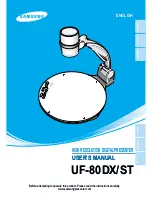
79
4
Tak
ing Pi
cture
s
As a guide, the camera should be moved about 1/40 of the distance
between the camera and the subject. For example, if the subject is 3 m
(9.8 ft.) away, the distance the camera should be moved will be
3 m ÷ 40 = 7.5 cm (3 in.). However, the way people view three-
dimensional images differs from person to person. Refer to the table
below for a simple guide to how far to move the camera.
3D pictures can be viewed by the [parallel] method where the left and
right lines of vision are virtually parallel, as when looking at a distant
scene, or the [cross] method where the left and right lines of vision are
crossed, as when you cross your eyes. A certain amount of practice may
be necessary to view 3D pictures without using the viewer.
How to View 3D Pictures Using the 3D Image Viewer (Optional)
Print out the pictures so that they are about 11 cm (4.3 in.) or 12 cm (4.7
in.) wide and place the divider of the 3D image viewer in the middle of the
two.
Distance to subject
0.1 m
(0.3 ft.)
0.3 m
(1 ft.)
0.5 m
(1.6 ft.)
1 m
(3.3 ft.)
3 m
(9.8 ft.)
5 m
(16.4 ft.)
Camera movement
0.5 cm
(0.2 in.)
1 cm
(0.4 in.)
1.5 cm
(0.6 in.)
2.5 cm
(1 in.)
7.5 cm
(3 in.)
13 cm
(5.1 in.)
As the distance between the left and right eyes differs from person
to person, some people may have difficulty obtaining a three-
dimensional effect even when looking at prints that are the same
size. It may be especially difficult if the pictures are very large or very
small. Try different sizes until the right effect is achieved.
• Never look at the sun through the 3D image viewer.
• Do not leave the 3D image viewer where it is exposed to direct
sunlight as this may lead to fire.
















































